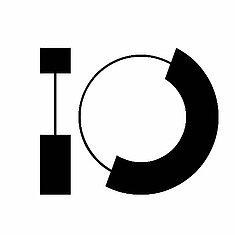Breakthrough research on iron powder kickstarts clean energy cycle

Researchers at TU/e are going to identify optimal feedstocks for iron powder production.
When we think about a sustainable future, windmills and solar panels often come to mind. But a big problem is that these renewable energy sources are prone to fluctuations and, therefore, don’t always match the constant demand for energy. This is where iron powder enters the picture. Recently, researchers from the Eindhoven University of Technology (TU/e) received an NWO grant to explore iron powder’s potential as an energy source and pinpoint optimal feedstocks for its production. “We want to kickstart a global clean energy cycle.”
The supply of energy from wind turbines and solar panels fluctuates greatly. When there’s an oversupply, you need to be able to store that energy. This is where iron powder comes into play. It can be easily stored and transported. Whereas hydrogen experiences efficiency losses during transport, this is scarcely the case with iron powder. Iron powder is also considered a promising renewable energy carrier because of its high energy density, carbon-free nature, and recyclability.
Optimal feedstocks
Researchers Xiaocheng Mi and Giulia Finotello from TU/e’s Eindhoven Institute for Renewable Energy Systems (EIRES) have been awarded a €845,000 grant to identify promising feedstocks for iron powder. Mi: “We want to kickstart a global clean energy cycle. Currently, iron powder is sourced from various industries, but the available quantity falls short for widespread use, either globally or nationally. We want to change that.”
Burning iron as a fuel and converting iron oxide back into iron involve fundamental physics that are still not completely understood. This is why industries look to fundamental researchers to offer insights. “And while they rely on our input, we also depend on their expertise to understand how the process technology will scale up,” Finotello explains.
The researchers will explore different feedstocks in the coming years, including materials from mining operations and ‘sludge’ from water treatment companies. Several industrial partners that will supply the fresh iron powders are:
- KWR Water Research Institute (a water institute from the Netherlands)
- ArcelorMittal (the second largest producer of steel in the world, from France)
- Pometon Spa (a manufacturer of metal powders from Italy)
- Companhia Siderúrgica Nacional (A Brazilian steel company)
Finotello: “At TU/e we have already demonstrated that we can process through combustion and reduction iron powder from powder manufacturers. However, using alternative sources like steel-making residues or water treatment byproducts will be more complex. Their composition and availability vary widely, even from the same supplier. For instance, iron powder may vary in composition, may contain impurities, and may come in different sizes and shapes. So there are enough challenges, and we hope to find some answers.”
Retrofitting coal power plants
In the future, iron powder could be used to, amongst others, retrofit coal power plants that currently burn coal powder, known for its pollution and CO₂ emissions. With iron powder, the combustion process would generate heat the same way it always did. In the Netherlands, there are currently four coal-fired power plants. These four plants can generate almost 4,000 MW of electricity at full capacity. In theory, this is enough to supply power to four million households simultaneously.
An entire ecosystem
Mi and Finotello are not the only researchers delving into the realm of iron powder. TU/e and their main industrial collaborators in this field, Metalot and IRON+, are world leaders in the technological development of iron powder. TU/e also houses the student team SOLID, whose interests span both technical fundamentals and the societal impact of this technology. Also, the Brabant-based startup RIFT, stemming from team SOLID, already heats hundreds of households with the ‘magical powder’. “Together, we are on a mission to propel this technology into reality”, Finotello adds.
As soon as possible
Mi admits that pinpointing the exact timeframe for observing the practical outcomes of a research project is always challenging. The research will span approximately five years. “Currently, we’re discussing with industrial users how we’ll arrange things. This might take a few months, but we aim to start as soon as possible.”
